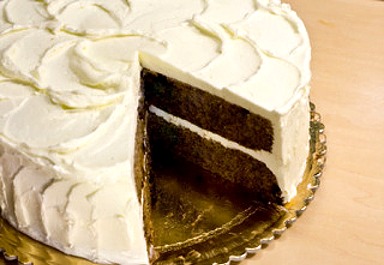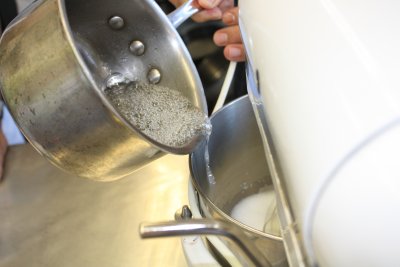Variations: Caramel IMBC, Chocolate IMBC, Cinnamon IMBC, Coffee IMBC, Fruit IMBC, Nutella IMBC, White Chocolate IMBC
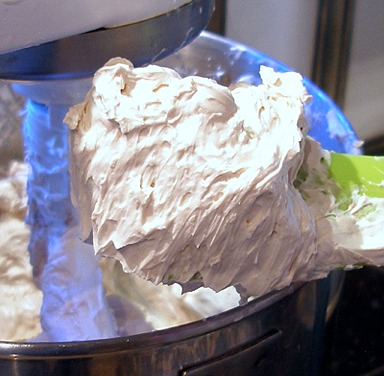
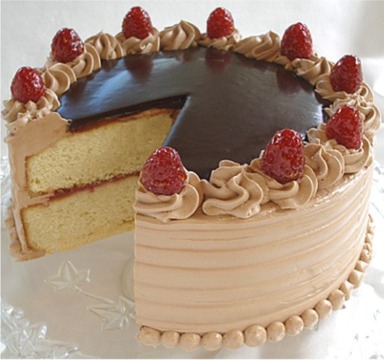
Nutella IMBC Variation used with our Nutella Raspberry Bliss Cake Recipe
SARAH SAYS: “Over the years I've modified and added different mixing techniques, and it no longer truly mirrors the one from Rose Levy Beranbaum's Cake Bible (“Mousseline Buttercream”)
This buttercream may seem tricky to make, but once made holds up better than any other European type buttercream; it is quite stable in 75 degree F weather – it can be used for a cake that will be in 90 degrees F weather with humidity, but won't be as stable It's light and smooth and incredibly easy to work with. It is soft enough for beautiful shell borders yet strong enough to pipe roses and can be tinted and flavored. It's like “Butter whipped into a fondant.”
The recipe starts out thin and lumpy looking and about three-fourths of the way through, it starts to come together or emulsify and turn into a luxurious cream.
FROSTING, ICING, ETC RECIPE HELP
INGREDIENTS
1 pound (4 sticks or 2 cups) unsalted butter (65 degrees F – slightly softened and cool – not runny, greasy or soupy)
1 cup (200 grams) sugar
1/4 cup (60 grams) water
5 large (150 grams) egg whites, room temperature
1/2 + 1/8 teaspoon cream of tartar
1 teaspoon liqueur of choice or optional flavorings below; Don't use more than 1 teaspoon or the recipe's emulsion will break.
1/4 teaspoon salt
NOTES:
A stand mixer works best, using the whip attachment for the eggs and switching to the paddle when you start adding the butter (to reduce unwanted air bubbles when icing the cake), and you'll need a candy thermometer.
INSTRUCTIONS
1. In a medium-size mixing bowl, beat the butter with a hand held mixer, until smooth and creamy. Set aside in a cool place.
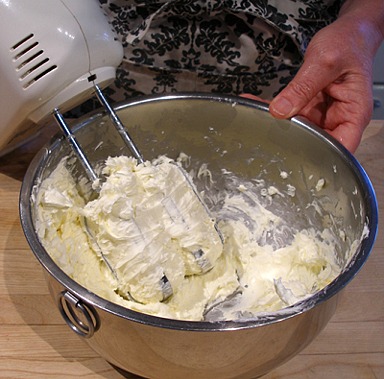
SARAH SAYS: The butter MUST remain cool.
2. Have ready a 2-cup heatproof large glass measuring cup near the stove. LIGHTLY spray the inside with nonstick vegetable oil spray.
SARAH SAYS: I skip this step and pour the hot sugar syrup directly from the pan into the mixing bowl in Step #12. However, some find it more difficult to do it this way, especially beginners.
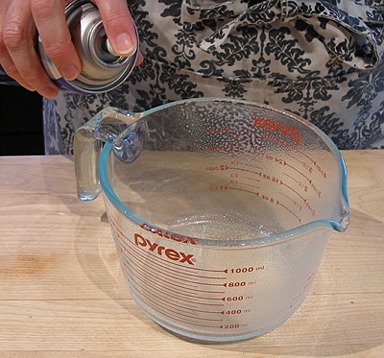
3. In a small heavy saucepan, combine 3/4 cup sugar and the 1/4 cup water.
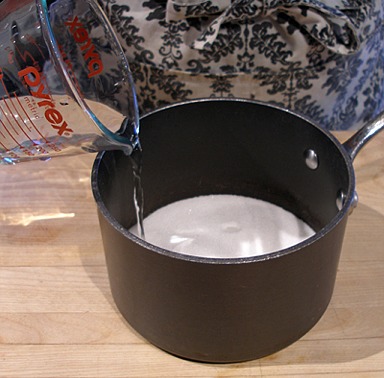
4. Under medium-high, boil sugar and water mixture, stirring constantly, until the sugar dissolves and the mixture is bubbling.
STOP stirring and reduce the heat to low. If using an electric range remove the saucepan from the heat.
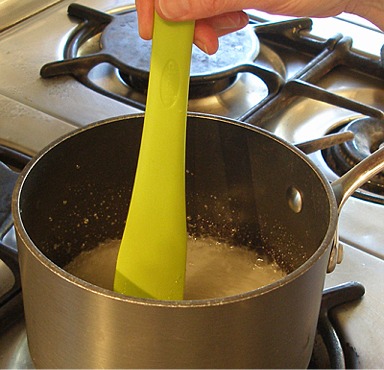
5. Meanwhile, place the egg whites in the mixing bowl of a stand mixer fitted with a WHISK attachment.
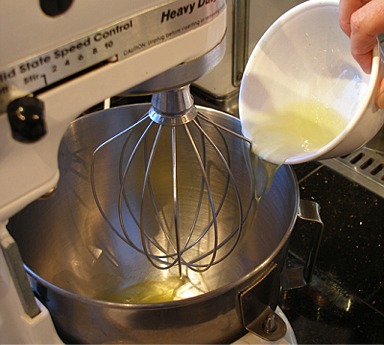
6. Beat the egg whites with a stand mixer on medium until foamy for 1 minute. Add the cream of tartar.
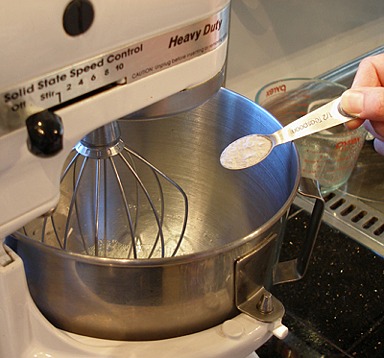
7. Beat for 3 more minutes on medium-high or until soft peaks form when the beater is raised.
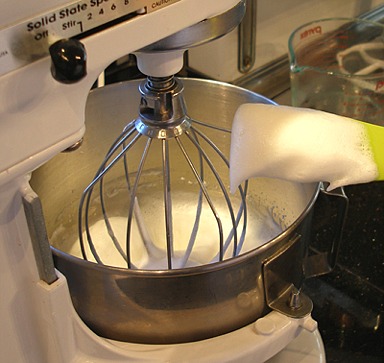
8. Gradually beat in the remaining 1/4 cup sugar, taking 3 more minutes.
SARAH SAYS: It is important to slowly build a stable egg white foam, so the resulting buttercream will not deflate. This is how it is done.
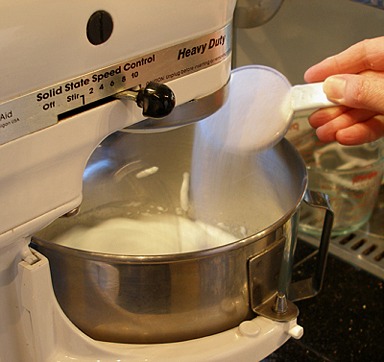
Increase the mixer speed to high and beat until stiff peaks form when the beater is raised slowly. Simply turn off the mixer.
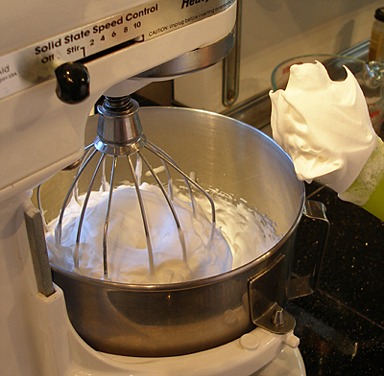
9. Increase the heat of the stove and boil the syrup until you get bubbles all over the surface. (If using an electric stove, return the saucepan to the heat and proceed.)
The syrup starts to look thicker and the Candy Thermometer registers 248 degrees F to 250 degrees F (firm ball stage).
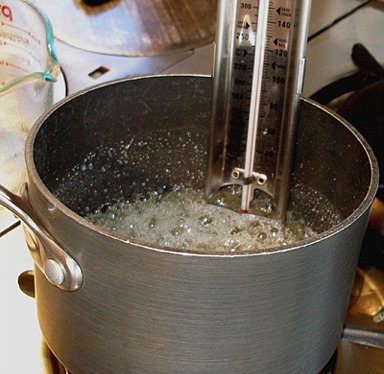
10. Optionally, immediately transfer the syrup to the glass measure to stop the cooking. Do not try and get the last remains of the sugar syrup at the bottom of the pan or any hardened bits of sugar.
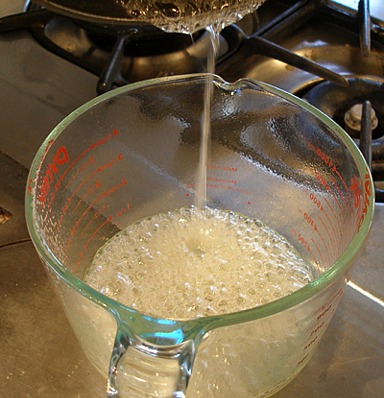
11. Optionally, fit the mixer with a PADDLE attachment or continue to use the whisk attachment.
SARAH SAYS: I find that the paddle attachment makes it easier to beat in the hot sugar syrup without getting it caught in the mixer blades.
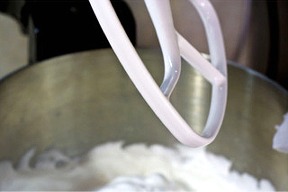
12. Turn the mixer on high, and start drizzling the sugar syrup, in a thin stream, into the contents of the bowl directly from the 2-cup heatproof large glass measuring cup or directly from the pan.
Aim for the space between the side of the bowl and the moving beater attachment. Do not hit the beater or splash the hot sugar syrup on the side of the bowl; the syrup will get caught in the beater and/or spin onto the sides of the bowl where they will harden, and will not get mixed into the egg whites, ruining the recipe with pieces of hardened sugar in your meringue.
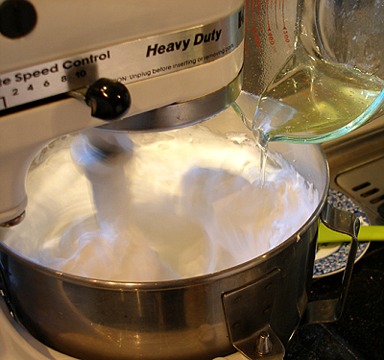
SARAH SAYS: Or, you can pour the sugar syrup right from its pan
SARAH SAYS: The buttercream will start to deflate; it's ok.
13. Continue with the remaining syrup, gradually pouring it into the beaten meringue. Do NOT try and get the last remains of the sugar syrup at the bottom of the measuring cup or any hardened bits of sugar from the pan.
Lower the mixer speed to medium-high and continue beating up to 2-3 minutes to start to cool the mixture.
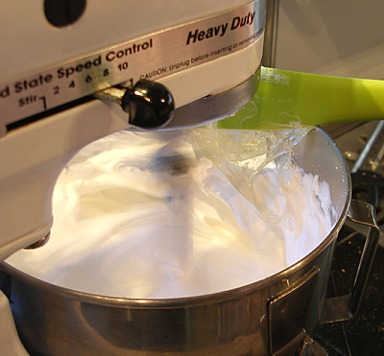
SARAH SAYS: The buttercream will begin to get fluffy and increase in volume.
14. Keep beating until the mixture cools completely, taking about 5 to 10 minutes. Feel the side of the bowl. It will feel really warm.
You want to cool the mixture down before you add the butter. If not completely cool, continue beating on medium speed – no lower. Keep feeling the side of the bowl to help you gauge the temperature of the mixture. At this stage, you have made Italian meringue. It should be glossy and thick, and very stiff.
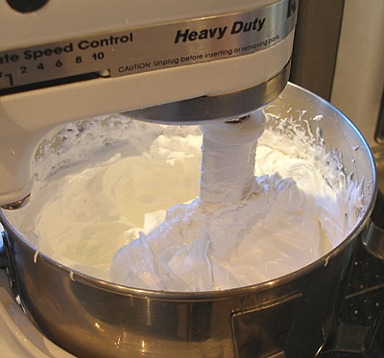
15. Beat in the softened but COOL butter at medium speed 1 tablespoon at a time until the buttercream is shiny and fluffy, about 8 to 10 minutes.
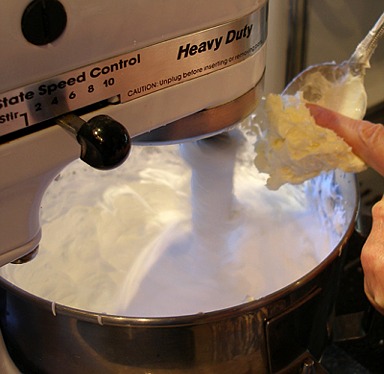
SARAH SAYS: Problems may occur at this stage: Italian Meringue Buttercreams are an emulsion between fat and water. When you add butter to the mixture, the temperature of the butter and whipped egg whites need to be pretty close, otherwise the mixture may curdle or become soupy.
Curdle: If the butter is colder than the egg white mixture, the beaten egg whites will curdle.
To fix, warm up the egg whites by increasing the beating speed slightly and beat until smooth, and then lower the mixer speed before continuing to add more butter.
Soupy: If the egg whites are too hot, the butter will melt, thinning the mixture, turning it a little soupy.
To fix, you can take a couple of ice cubes in your hand, and rub the all over the outside of the bowl, until it comes together. Be sure to keep the ice cubes moving. Do not leave them in one spot for too long.
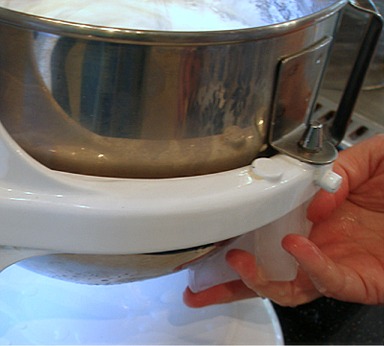
16. Dissolve the salt in the liqueur. Keep the mixer speed on medium and drizzle in the liqueur mixture.
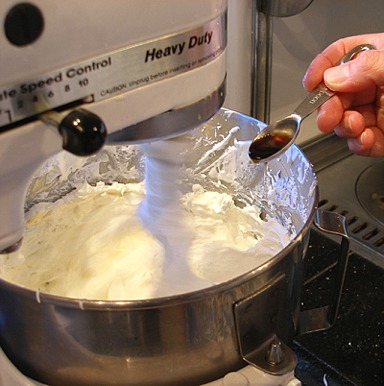
The final texture of the buttercream should be very light, fluffy and smooth.

STORAGE
Place in an airtight bowl. Will keep 10 days refrigerated, 8 months frozen. Thaw in the refrigerator.
If refrigerated, rebeat with a hand-held whisk lightly from time to time to maintain silky texture; buttercream becomes spongy on standing. However, allow to come to room temperature completely before rebeating to restore texture or it will break down irretrievably.
Refrigerating the mixture to firm the fat in the butter and then rebeating helps to fluff it up, too. Buttercream becomes spongy on standing.
VARIATIONS
After making the main recipe, fit the mixer with a paddle attachment and set its speed on medium. You can beat in:
Caramel (by odetteganda): I added 1/2 cup of the Dulce de Leche syrup in the frosting after all the butter had been added. Used with the Caramel Sponge Cake Variation of Priscilla's Orange Sponge Cake.
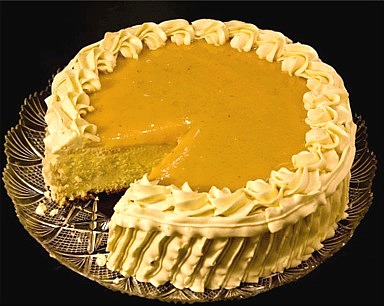
ODETTEGANDA, Premium Member, Says: The recipe used is the Caramel or Dulce de Leche, but has only been in the oven for 1-hour to 1 1/2 hours so that it will still be pourable. Can use homemade Dulce de Leche Syrup, instead.
Cinnamon: Dissolve and beat in a teaspoon of ground cinnamon in Step 16.
Coffee: See the Hazelnut Almond Mocha Dacquoise Meringue Cake for recipe.
Fruit: Beat in up to 3/4 cup lightly sweetened fruit puree (strawberry or raspberry) or orange, passion, lemon or lime.
Nutella: Beat in 5 ounces of room temperature Nutella. Used with the Nutella Raspberry Bliss Cake

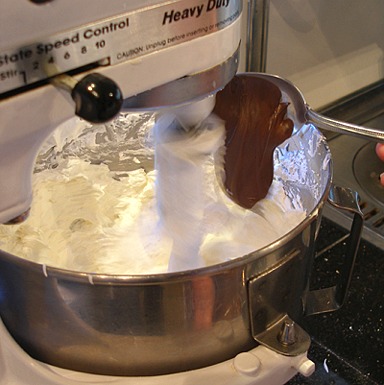
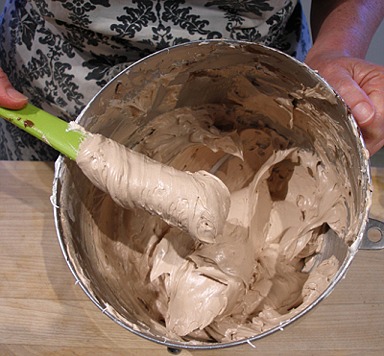
White Chocolate: Beat in 6 ounces of melted and cooled white chocolate. Used with the Allspice Applesauce Layer Cake.
